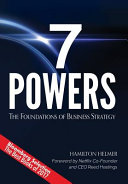

The Power of Scale emphasizes the ability of a business to grow and expand its operations efficiently. Scale allows companies to reduce costs per unit, increase market share, and enhance customer reach. This power is particularly relevant in industries where fixed costs are high, and marginal costs are low. Businesses that harness the Power of Scale can leverage their size to negotiate better deals with suppliers, invest in marketing, and innovate faster than smaller competitors. The book discusses how companies like Amazon and Walmart have used scale to dominate their respective markets, highlighting the importance of strategic planning and operational excellence in achieving this power.
Continue readingNetwork Effects occur when the value of a product or service increases as more people use it. This concept is critical in the digital age, where platforms like Facebook and LinkedIn thrive because their value grows with user engagement. The book illustrates how businesses can create and sustain network effects, leading to a competitive advantage that is difficult for new entrants to replicate. By building a large user base, companies can enhance their offerings, attract more users, and create a self-reinforcing cycle of growth. Understanding this power is essential for entrepreneurs looking to develop scalable and sustainable business models.
Continue readingBranding is a powerful tool that can differentiate a company from its competitors. A strong brand creates trust and loyalty among customers, allowing businesses to charge premium prices and maintain market share. The book emphasizes the importance of developing a unique brand identity and communicating it effectively to the target audience. It also discusses strategies for building brand equity, such as storytelling, consistency, and emotional connection. Companies like Apple and Nike exemplify how effective branding can lead to a loyal customer base, increased sales, and market dominance.
Continue readingDistribution power refers to a company's ability to deliver its products or services to customers effectively. This power can take many forms, from physical retail locations to online platforms. The book discusses how companies can optimize their distribution channels to reach customers more efficiently, reduce costs, and enhance customer experience. Successful businesses often leverage partnerships, logistics, and technology to improve distribution. The case studies presented in the book show how companies like Coca-Cola and Amazon have mastered distribution to gain a competitive edge in their markets.
Continue readingProduct Differentiation is the ability of a company to offer unique products or services that stand out in the marketplace. This power allows businesses to create a niche for themselves and command higher prices. The book explores various strategies for achieving product differentiation, such as innovation, quality, and customer service. It emphasizes the need for continuous improvement and adaptation to changing market conditions. Companies like Tesla exemplify how product differentiation can lead to a loyal customer base and significant market share in a crowded industry.
Continue readingMarket Positioning is about creating a unique place for a brand in the minds of consumers. This power is crucial for businesses seeking to establish a competitive advantage. The book discusses various positioning strategies, including targeting specific demographics, focusing on niche markets, and leveraging unique selling propositions. Effective market positioning helps companies communicate their value proposition clearly and attract the right customers. The case studies provided illustrate how brands like Airbnb have successfully positioned themselves in the market, leading to rapid growth and customer loyalty.
Continue readingStrategic Partnerships involve collaborating with other businesses to achieve mutual benefits. This power can unlock new markets, enhance product offerings, and share resources for innovation. The book explores how successful companies leverage partnerships to gain access to new technologies, distribution channels, and customer bases. It highlights the importance of aligning goals and values between partners to ensure long-term success. Examples from companies like Spotify and Uber demonstrate how strategic partnerships can lead to exponential growth and competitive advantages in the marketplace.
Continue reading